The Old Summer Palace, also known as Yuanming Three Gardens, is located in the northwest suburb of Beijing and adjacent to the Summer Palace. It is a large imperial garden in the Qing Dynasty, comprising the Garden of Perfect Brightness (Yuanming Yuan), Garden of Eternal Spring (Changchun Yuan) and Garden of Elegant Spring (Wanchun Yuan). In addition, it is surrounded by many small gardens in the east, west and south. Covering an area of over 350 hectares and a construction area of 200,000 square meters, it is honored as the "Garden of Gardens" with more than 150 scenic spots. Every summer, the Qing emperor would come here to escape the summer heat and deal with the state and military affairs; it is also called the "Summer Palace" (Xia Gong).
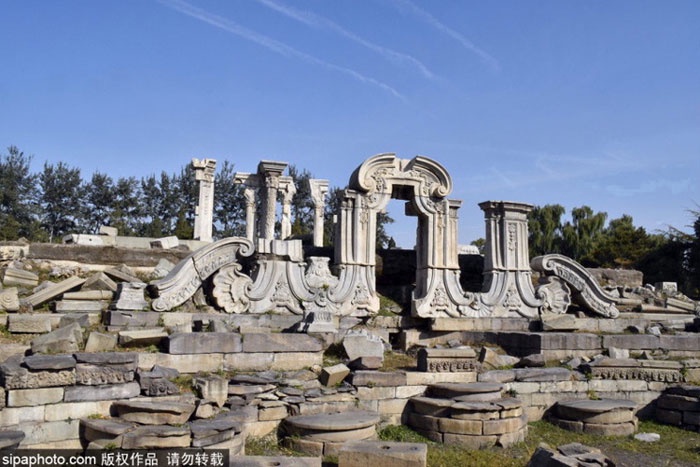
Built in 1709 (the 48th year of Emperor Kangxi's reign), the Old Summer Palace (known in Chinese as Yuanming Yuan) was a gift for the emperor's fourth son, Yin Zhen (the future Emperor Yongzheng). Since his succession in 1722, Emperor Yongzheng expanded the palace by additionally constructing the Hall of Justice and Honor, Hall of Diligent Government and Grand Secretariat (Nei Ge), Six Ministries (the Ministry of Personnel, the Ministry of Revenue, the Ministry of Rites, the Ministry of War, the Ministry of Justice and the Ministry of Works) and the Grand Council, as the venue for “administrating state affairs in the noiseless environment”. During the reign of Emperor Qianlong, in addition to the partial construction and reconstruction, the Garden of Eternal Spring (Changchun Yuan) was built close to the east and Garden of Elegant Spring (Wanchun Yuan) was incorporated into the southeast suburb. That is the basic layout of the Yuanming Three Gardens. During the Jiaqing reign, major renovation and extension were conducted to the Garden of Elegant Spring, also known as Qichun Yuan. During the reign of Emperor Daoguang, as a result of the irreversible decline of sovereignty and insufficient financial resources, the emperor would rather make the reconstruction and decoration of the Yuanming Three Gardens than arrange the display of Longevity Hill, Fragrant Hill, Jade Spring Hill or enjoy the summer resort at Rehe (present-day Chengde, Hebei) and hunt at the Mulan Paddock. On October 6, 1860, the Anglo-French Allied Force sacked and looted the Old Summer Palace, plundered cultural relics and burned the garden to the ground. When Emperor Tongzhi wanted to repair them, he was forced to stop and rebuild other buildings because of financial difficulties. Later, hit by bandits and the Eight-Power Allied Forces, it turned into ruins.
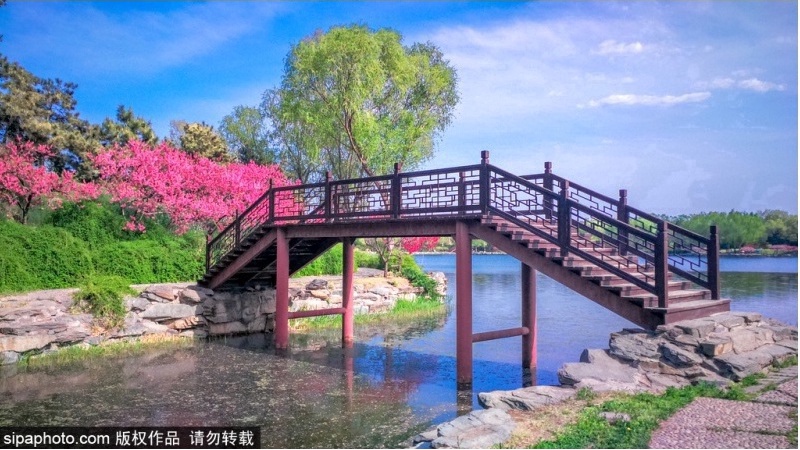
The Old Summer Palace, founded and operated in the Qing Dynasty for more than 150 years, enjoys great prestige in the world for its large scale, amazing craftsmanship, exquisite building landscape abundant cultural collections as well as extensive and profound national culture. It is honored as “model of all gardening arts”. The French writer Victor Hugo reputed it as “An Example of Ideals and Art”.
The Ruins of Yuanmingyuan is located in the east of central Haidian District, Beijing, 20 km away from Xizhimen in the northwest. In its southeast corner, it is the west gate of Tsinghua University. This park is a famous patriotic education base. The park was built in 1988. Only the mountain shape, water system, garden pattern and building base are left. And tourists can still see remains of rockeries, stones and sculptures. There is a garden history exhibition hall at the former site of "Western Mansions" for people to pay homage.
Recommendation
Great Palace Gate (Dagongmen)
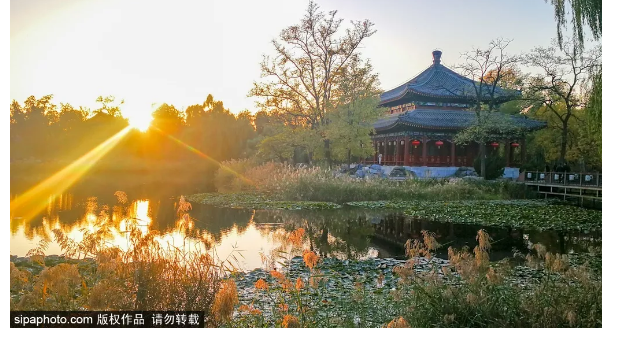
There are 5 grand palaces in total. The gate is facing south, with a large platform in front, 5 rooms in the east and west respectively and 27 corner rooms shaped like a bevel gauge at the back, which are Court of the Imperial Clan (Zongren Fu), Grand Secretariat (Nei Ge), Ministry of Rites (Li Bu), Ministry of Personnel (Li Bu), Ministry of War (Bing Bu), Chief Surveillance Bureau (Ducha Yuan), Court of Colonial Affairs (Lifan Yuan), Hanlin Academy (Hanlin Yuan), Household Administration of the Heir Apparent (Zhanshi Fu), Directorate of Education (Guozi Jian), Imperial Procession Guard (Luanyi Wei) and four-banner duty rooms in the east; Ministry of Revenue (Hu Bu), Ministry of Justice (Xing Bu), Ministry of Works (Gong Bu), Directorate of Astronomy (Qintian Jian), Imperial Household Department (Neiwu Fu), Court of Imperial Entertainments (Guanglu Si), Office of Transmission (Tongzheng Si), Court of Judicial Review (Dali Si), Court for Dependencies (Honglu Si), Court of Imperial Sacrifices (Taichang Si), Court of the Imperial Stud (Taipu Si), Imperial Library (Yushu Chu), Palace Stud (Shangsi Yuan), Court of Imperial Armaments (Wubei Yuan) and four-banner duty rooms in the west.
Hall of Justice and Honor
The Hall of Justice and Honor is the main hall of the Garden of Perfect Brightness, where emperors hold birthday celebrations, entertain colonial heads, ministers, hold the feast for Zhongyuan Festival, watch the dragon dance and organize the Hanlin Academy entrance exam, the provincial examination (released into Officialdom) and the reexamination. Hanging on the middle of the hall is the plaque that says "Justice and Honor (Zhengda Guangming)", the characters of which are inscribed by Yongzheng himself. There are seven rooms in the hall, with a broad platform in front and five rooms on both sides.
Hall of Diligent and Talented Government (Qinzheng Qinxian Dian)
The Hall of Diligent and Talented Government is the front room of the western chamber of the Hall of Mental Cultivation (Yangxin Dian), which is located in the east of the Hall of Justice and Honor. With 5 rooms, it is the emperor's office in sultry summers. There is a throne in the north, a window on the opposite side, and a plate wall with a door in the east connecting with the outer room of the Hall of Mental Cultivation, which is the place where the emperor summons the ministers. There is a wooden screen around the holding building outside the window, which is quite hidden and separated from the outer room. Now it displays the original palace life.
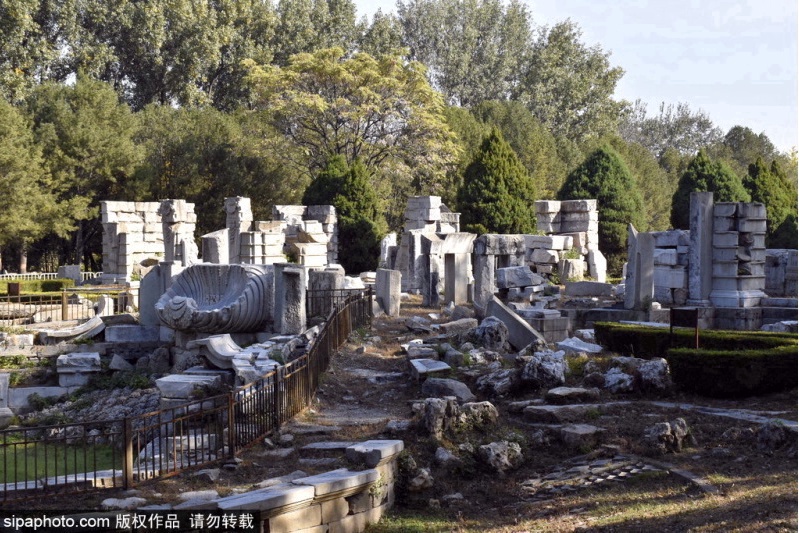
Nine Continents Clear and Calm (Emperor’s Private Residence)(Jiuzhou Qingyan)
The Nine Continents Clear and Calm is located on the north bank of the Front Lake, facing the Hall of Justice and Honor across the lake. It is composed of three entries to the south, which are the Hall of Garden of Perfect Brightness, Hall of Selfless (Fengsan Wusi Dian), and Hall of Nine Lands at Peace in order. In the east of the central axis is the Hall of Heaven and Earth United in Spring (Tiandi Yijia Chun), the birthplace of Daoguang. In the west is the Hall of Happiness, Peace and Harmony (Le An He), the bed-chamber of Qianlong. In the west is Qinghui Pavilion (Qinghui Ge), with a large panoramic picture of the Garden of Perfect Brightness hanging on the north wall. The original painting is collected in the Musée Grévin. In the 10th year of Daoguang's reign, the Hall of Prudent Virtue (Shende Tang) and other buildings were built near the Hall of Pleasantly Recording (Yiqing Shushi), all of which were the emperor's sleeping chambers. In the 16th year of Daoguang's reign, there are the Hall of the Garden of Perfect Brightness, the Hall of Selfless (Fengsan Wusi Dian) and the Hall of Nine Lands at Peace. At the same time, it was burned; Emperor Yongzheng and Emperor Daoguang died here.
Eternal Spring Immortals Hall (Changchun Xianguan)
The Eternal Spring Immortals Hall was built in the 9th year of Emperor Qianlong's reign (1744 AD). The Eternal Spring Immortals Hall is located in the west of Front Lake, and Qianlong lived here before he became the emperor. There are three houses and five main halls.
Engraved Moon and Unfolding Clouds (Louyue Kaiyun)
The Engraved Moon and Unfolding Clouds, formerly known as Peony Pavilion, stands in the southeast corner of Back Lake. It is a wood building with two-color glazed tiles on the top. After Qianlong ascended the throne, it was renamed "Engraved Moon and Unfolding Clouds". In the 31st year of Qianlong's reign, he wrote the plaque title "Jisi Tang". There are hundreds of peonies with various colors in the courtyard.
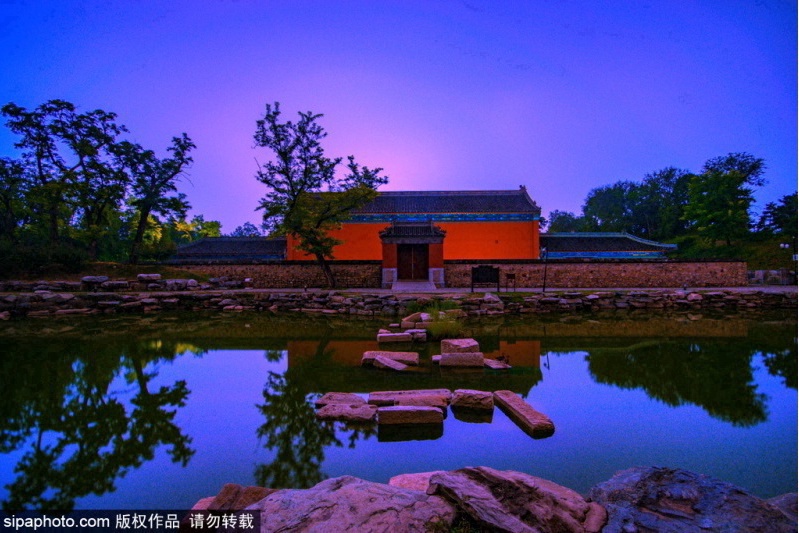
Green Parasol Study (Buting Shuyuan)
The Green Parasol Study was built in the 9th year of Emperor Qianlong's reign (1744 AD). It is a study located in the northeast corner of Back Lake.
Unity of Sky and Water (Shangxia Tianguang)
The Unity of Sky and Water is located in the northwest of Back Lake. It is a two-storey building where tourists can have a full view of the scenery of the lake.
Hall of Spring with Apricot Blossom (Xinghuachun Guan)
Located in the west of the Unity of Sky and Water, the Hall of Spring with Apricot Blossom lies between lakes with an apricot flower village in the West and a vegetable garden in front.
The Magnanimous World (Tantan Dangdang)
The Magnanimous World is close to the west bank of Back Lake. With a large pool in the middle, it is a special fish farming area surrounded by buildings.
Universal Peace (Wanfang Anhe)
The Universal Peace is located in the west of the Hall of Spring with Apricot Blossom. It is a grand character-type building on the water with 33 rooms.
High Mountains and Long Rivers (Shangao Shuichang)
Located in the west of the Magnanimous World, the High Mountains and Long Rivers is a two-storey building facing west, with 9 rooms up and down respectively. Between the stream in front and the earth slope in the back, it is a flat place for holding a banquet for colonial heads and for martial arts competitions.
Courtyard of Universal Happiness (Tongle Yuan)
Located in the northeast of Back Lake, the Courtyard of Universal Happiness is the largest stage in the park, with the three-storey Pavilion of Clear Sounds (Qingyin Ge) in 10 zhang width, and the crankshaft for special effects on the lower floor. There are five dressing rooms in the south and five theaters in the north. During the region of Qianlong, a thanking festival would be held every year from the 13th day of the first lunar month, when the emperor would entertain and award the princes, colonial heads and ministers listening to the opera together. On the occasion of the emperor's birthday, it is the place for celebrations with performances lasting for several days.
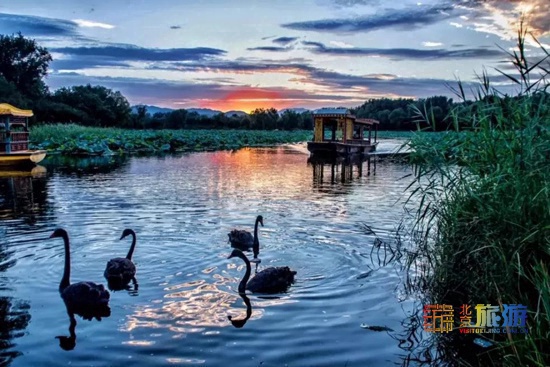
Blessing Palace (Anyou Gong)
Located in the northwest corner of the Garden of Perfect Brightness, the Blessing Palace was built in the seventh year of Qianlong's reign. It's a complete replica of the Imperial Ancestral Temple in the Forbidden City. The portraits of Kangxi, Yongzheng and Qianlong are displayed here.
Sounds of Wood and Water (Shuimu Mingse)
The Sounds of Wood and Water is located in the center of the small garden cluster area to the north of Back Lake. Equipped with the water-driven fan, it is the earliest the Waterworks Viewing Place in the park, which imitates the Water Bamboo House in Yangzhou.
Sravasti Complex (Shewei Cheng)
Located in the east of the Sounds of Wood and Water, the Sravasti Complex is a small town specially developed in the park. Modeled on the capital city of Kosala in ancient India, it is a place for worshiping various Buddha statues and collecting Buddhist scriptures. It is a rectangular city surrounded by walls, which is long from north to south, with four gates. With crisscross streets, it has 326 temples and houses connected by verandas, as well as several magnificent decorated archways. In front of the city, there is a special shopping street running through the north and south, called Suzhou Street and the eunuchs pretend to be businessmen, which is recorded in details by the French priest Jean Denis Attiret.
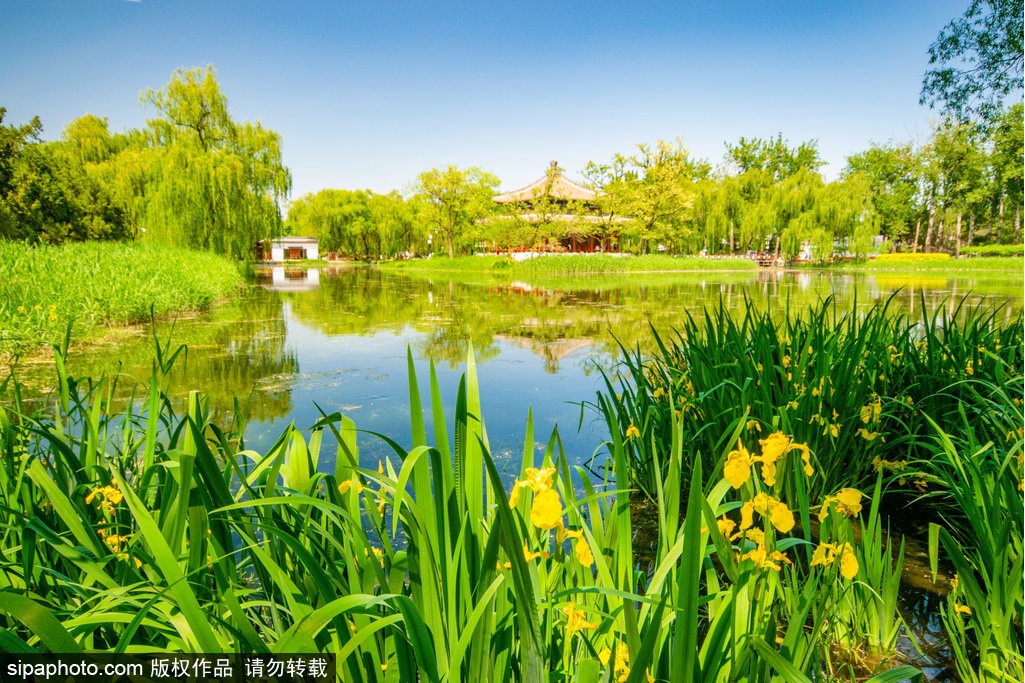
Belvedere of Literary Profundity (Wenyuan Ge)
The Belvedere of Literary Profundity is located in the north of the Sounds of Wood and Water, formerly known as Sida Pavilion. After Qianlong's southern tour in Zhejiang Province, it was rebuilt in imitation of Tianyi Pavilion, the Ming library in Ningbo, to collect Siku Quanshu (Complete Library in the Four Branches of Literature).
Boundless Impartiality (Kuoran Dagong)
The Boundless Impartiality, also known as the Double Crane Room (Shuanghe Zhai), is located in the northeast of the Sravasti Complex. It is a large building with the main building close to the big pool in the north and other scenic spots, such as the Poem Chanting Hall (Shiyong Tang) and the Deep Lotus (Linghe Shenchu).
Elegant Color of the Western Peaks (Xifeng Xiuse)
The Elegant Color of the Western Peaks, known as the small Lushan Mountain in the park, is built after Lushan Mountain in Jiangxi Province; the View Fish Garden at Flowery Harbor in Houyuan is modeled after the scenery of West Lake in Hangzhou. Every Chinese Valentine's Day, a grand banquet will be held here.
Library of the Four Seasons (Siyi Shuwu)
The Library of the Four Seasons is located in the northeast of the Boundless Impartiality. There are 5 halls, of which the main hall is called Anlan Garden (Anlan Yuan). It is rebuilt following the example of a corner garden of the Chen Family in Haining on the Bank of Hangzhou Bay after Qianlong's Southern Tour.
Village of Distant Northern Mountains (Beiyuan Shancun)
The Village of Distant Northern Mountains is located in the east of the North Gate. Surrounded by rice fields, the houses here are named according to farming, showing idyllic scenery.
Beautiful Scene of the Square Pot (Fanghu Shengjing)
Located by the waterside of northeast Fuhai Lake, the Beautiful Scene of the Square Pot is a grand building in the shape of the mountain.
Jade Terrace of Paradise Island (Penglai Yaotai)
The Jade Terrace of Paradise Island is located in the center of Fuhai Lake. There are 3 islands in total. It is built and designed according to the "Moral Mountain and Pavilion" by Li Sixun, an ancient painter. In the three-gate building, there are 7 main halls, with Changjin Pavilion in the east, Three Islands On Shenzhou in the west. The East hall is the Sui'an Room (Sui'an Shi), the west hall is the Good News Reporting Room (Riri Ping'an Bao Haoyin). There is a ferry bridge in the southeast, connecting the East Island, where lies the Yinghai Moral Mountain Pavilion. There is a curved bridge in the northwest, connecting the North Island with three buildings on it.
House which Meets the Beauty of the Hills (Jiexiu Shanfang)
The House which Meets the Beauty of the Hills is located in the southeast corner of Fuhai Lake. The interior decoration is all made of red sandalwood lacquerware, which is inlaid with rare treasures, such as gold and silver, gemstone, ivory, in the pattern of mountains and rivers, pavilions, figures, flowers and trees, insects and birds. This kind of decoration, from design to carving technique, was created by a craftsman named Zhou in Hangzhou at the end of Ming Dynasty. Therefore, it is called Zhou Style, which plays an important role in Chinese sculpture history.
Calm Lake Under the Autumn Moon (Pinghu Qiuyue)
The Calm Lake Under the Autumn Moon is located in the northwest corner of Fuhai Lake, with the essence of Autumn Moon Hanging over the Calm Lake and Twin peaks Piercing Clouds of the West Lake in Hangzhou.
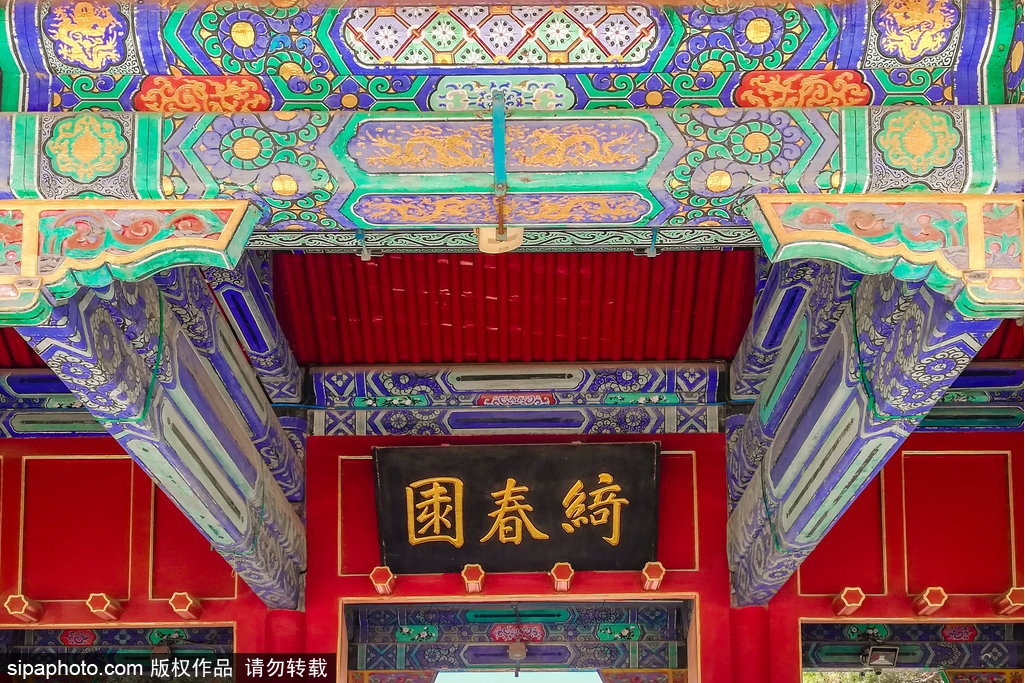
Distillery and Lotus Pond (Quyuan Fenghe)
The Distillery and Lotus Pond is located in the south of the Courtyard of Universal Happiness on the west bank of Fuhai Lake. There are 5 main halls in a row, which is built according to the Quyuan Garden of the West Lake in Hangzhou. There is a 9-hole stone bridge across the pond.
Chunghua Pavilion (Chunhua Xuan)
The Chunhua Pavilion is the main building in the center of Garden of Eternal Spring. When it was finished, it coincided with the completion of Re engraved Chunhua Pavilion. Therefore, the engraved block was embedded in the walls of the left and right galleries, hence the name. There are 144 blocks, a total of 10 volumes, which collect the authentic works of 99 masters of all dynasties; after the carving, another 400 pieces of rubbings were distributed to the royal families, ministers, as well as palaces in Zhili, Shandong and Zhejiang and places of interest. And this place, therefore, becomes a well-known forest of steles in Beijing.
Mind-Opening Isle (Haiyue Kaijin)
The Mind-Opening Isle was built in the pool, with a two-storey circular platform base, surrounded by white marble balustrades. There are three floors of buildings on the platform: the lower one is the Mind-Opening Isle with "Qing Yao Yu" on the south eave; the middle one is Dejin Pavilion with "Tian Xin Shui Mian"; the top one is the Garden of Perfect Brightness inscribed with "Cheng Liu Long". A memorial archway is built on each side. Of all the buildings in the Garden of Perfect Brightness, it is the most luxurious complex.
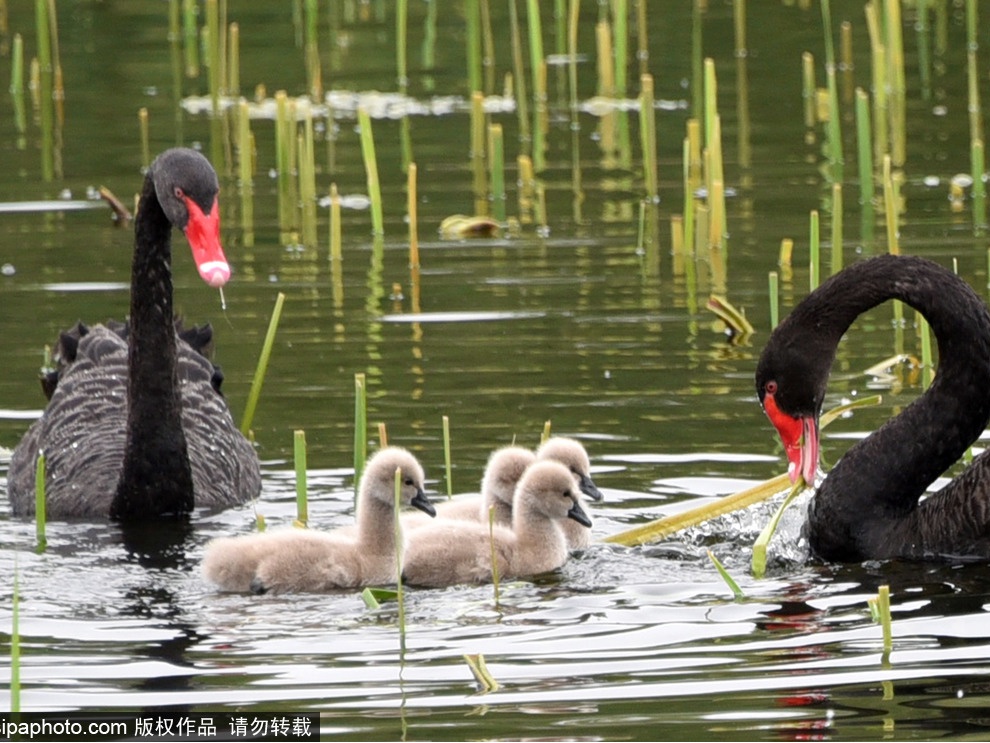
Lion Forest Garden (Shizi Lin)
The Lion Forest Garden is located in the northeast corner of Garden of Eternal Spring. After Emperor Qianlong visited Suzhou, he built this one based on the Lion Forest Garden in Suzhou. There are 16 scenic spots here, 8 of which have been built successively, forming the unique scenery.
Ruyuan Garden
The Ruyuan Garden is located in the southeast corner of Garden of Eternal Spring. Based on the Zhanyuan Garden of Xu Da, the Ming general, it was built after the emperor's tour to Jiangning (now Nanjing City) in the 32nd year of Qianlong's reign.
Harmonious Wonder (Xie Qi Qu)
It is the first three-storey building built in the autumn of the 16th year of Qianlong's reign. There is a big spray pool, with fountains composed of copper goose, copper sheep and Western roll-tailed stone fish. On the left and right sides of the building, the octagonal hall extending from the zigzag veranda is the place to play Chinese and western music.
Hall of National Peace (Haiyan Tang)
It's the biggest palace in the Western Mansions. Facing west, the main building has a large pool in front. There are bronze statues of the 12 zodiac animal head (Rat, Ox, Tiger, Rabbit, Dragon, Snake, Horse, Goat, Monkey, Rooster, Dog, and Pig) with the human body on the left and right sides, which are arranged in an eight-character row. They will spray water every two hours in turn every day. At noon, they will spray water together. It is commonly known as "water clock". Originally, it was a nude woman in European style, but Emperor Qianlong thought that the former shape was not in accordance with Chinese customs, so he changed it to the bronze statue representing Chinese zodiac.
Great Fountain (Da Shui Fa)
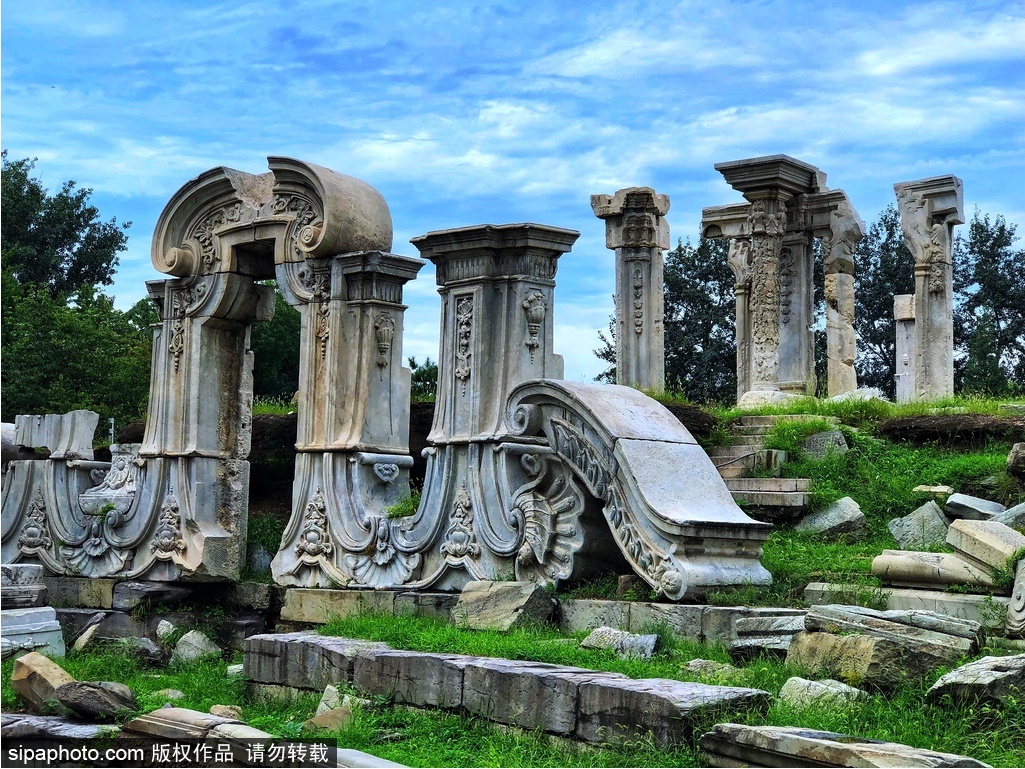
It is the most spectacular fountain in the Western Mansions. The cave-like shape bears a strong resemblance to the doorway. At the bottom, there is a large lion head spraying water, forming a seven-layer water curtain. There is an elliptical chrysanthemum spray pool in the front lower place. There is a copper sika deer flanked by ten copper dogs spraying water from their mouths directly on the deer's body. The copper deer standing in the center jets out eight spouts from the antlers. It is commonly known as "hunting dogs chase the deer". In front of the Great Fountain, there is a huge 13-story square water spray tower, with water from the top. It is surrounded by 88 copper pipes spraying water together. At that time, the emperor was sitting the Waterworks Viewing Place on the opposite side to enjoy them. Envoys, such as Macartney from Britain and De Sheng from the Netherlands, all had "looked up" this remarkable spectacle here. It is said that if all the fountains are open, they will be as powerful as a flash flood. People need to make gestures when talking with each other. Therefore, it would be the tremendously spectacular scenery.
Waterworks Viewing Place (Guanshui Fa)
The Waterworks Viewing Place is located at the south end of the central axis of Immense Ocean Observatory (Yuanying Guan). There is mainly a platform base for the emperor's throne, a tall stone sculpture screen behind it, bakelu gates on both sides with a huge water tower and a pool receiving water respectively. There are various semicircle beasts beside the pool to show the animals' war and deer chasing in the forest; the 12 nozzles in different animals' mouths are equipped with clocks. According to the traditional Chinese timing method, one animal will spray water into the pool every two hours.

Flowers Array (Wanhua Zhen)
The Flowers Array, also known as the Yellow Flower Array, is a garden modeled on European mazes. It is divided into several mazes with four-chi high carved brick walls, so it is called "flowers array". Although it is only 30 m from the entrance to the Central Pavilion, the array is easy to enter but hard to get out. On the night of the Mid-Autumn Festival, the Qing emperor would sit in the round pavilion in the center of the array, while eunuchs and court ladies holding lotus lanterns made of yellow silk searched for the destination in the maze and the first one could get the emperor's reward. So it is also known as yellow flower array or yellow flower lantern. The Qing emperor sat in a high place to look around the lotus lanterns as a pleasure.
Perspective Hill (Xianfa Shan)
Between the Perspective Hill and the Perspective Wall, there is the Square River. A model of Venice City would be placed in the water tank under the Perspective Wall, and the emperor would sit on the hill to appreciate the scenery.
Address: No. 28, Qinghua West Road, Haidian District, Beijing
Transportation:
East Gate: taking the bus No. 365, 432, 498, 656, 664, 717, 743, 814, 982, 963, Special 4, Yuntong 105 or Yuntong 205; South Gate: taking the bus No. 319, 320, 331, 432, 438, 498, 628, 690, 697, 696, 801, 826 or Special 6.



